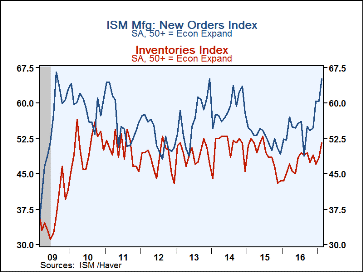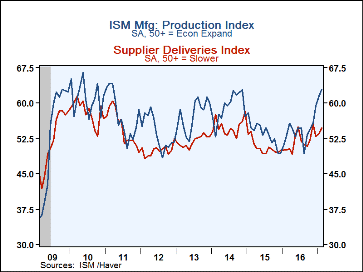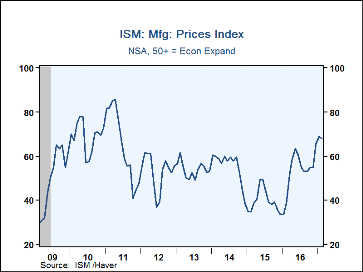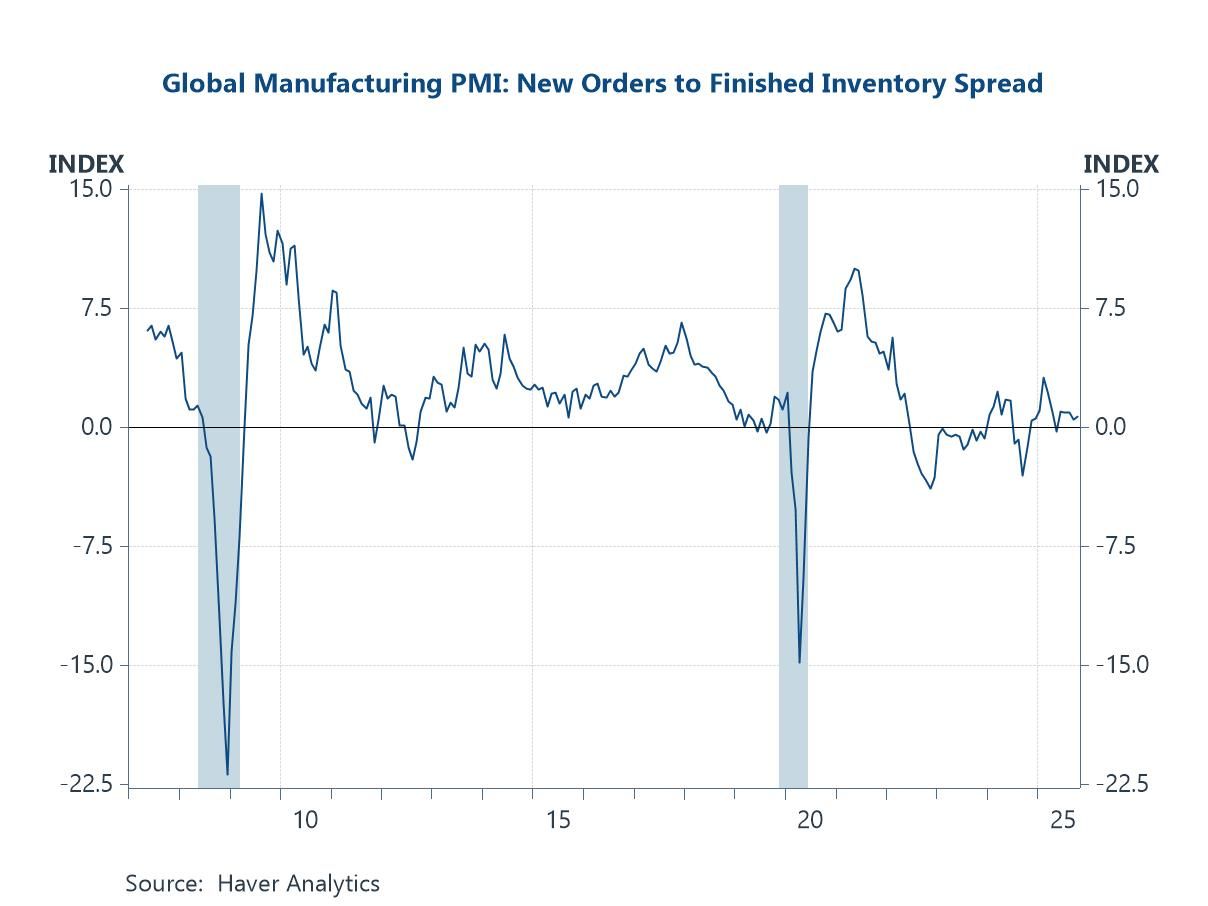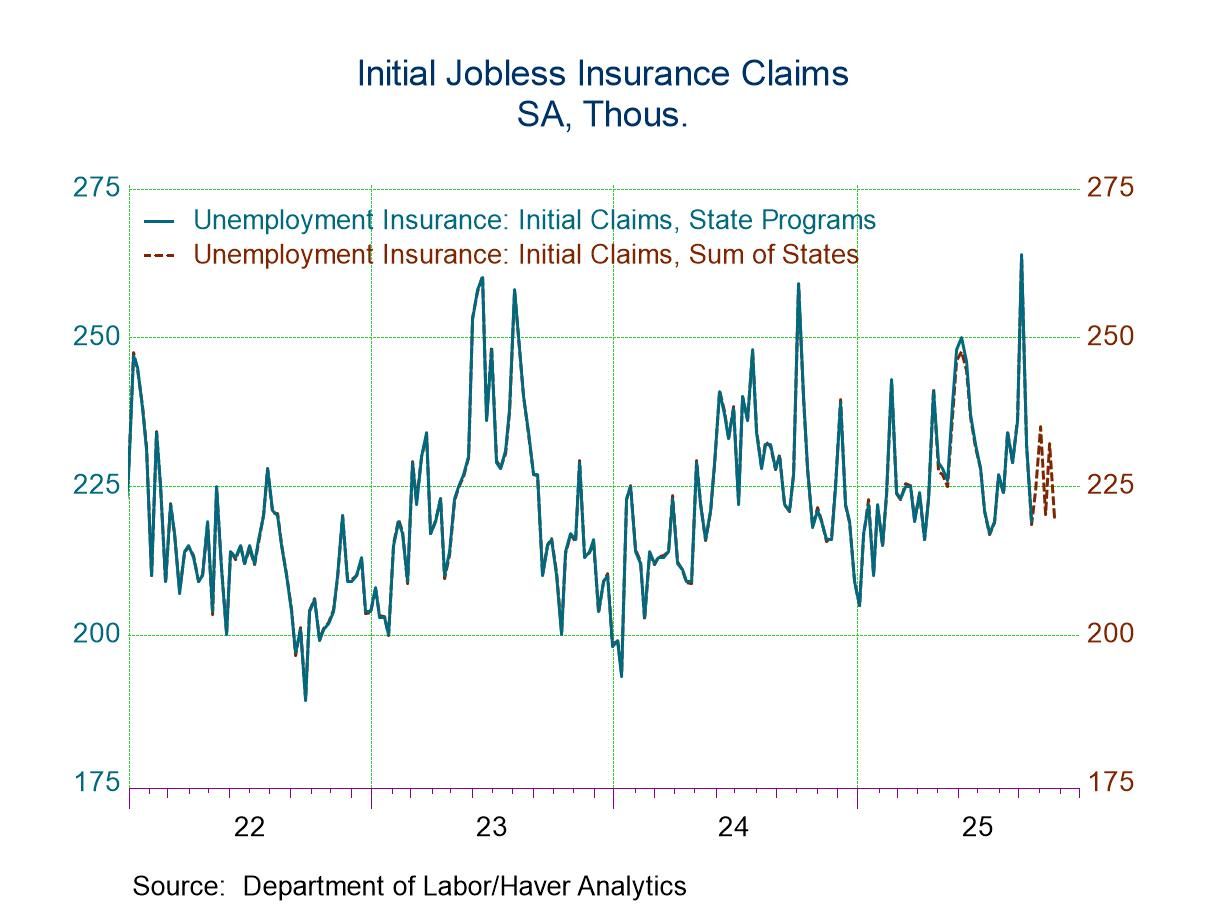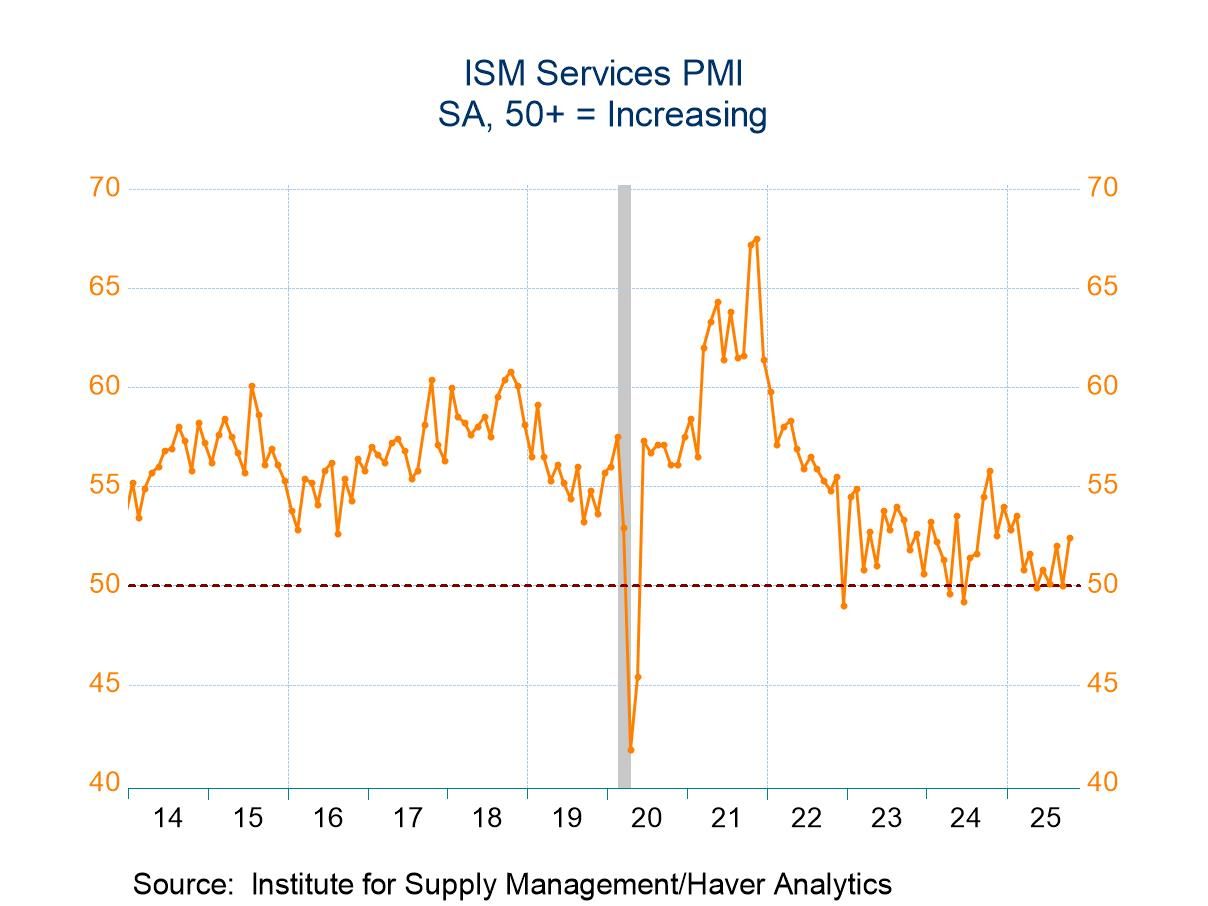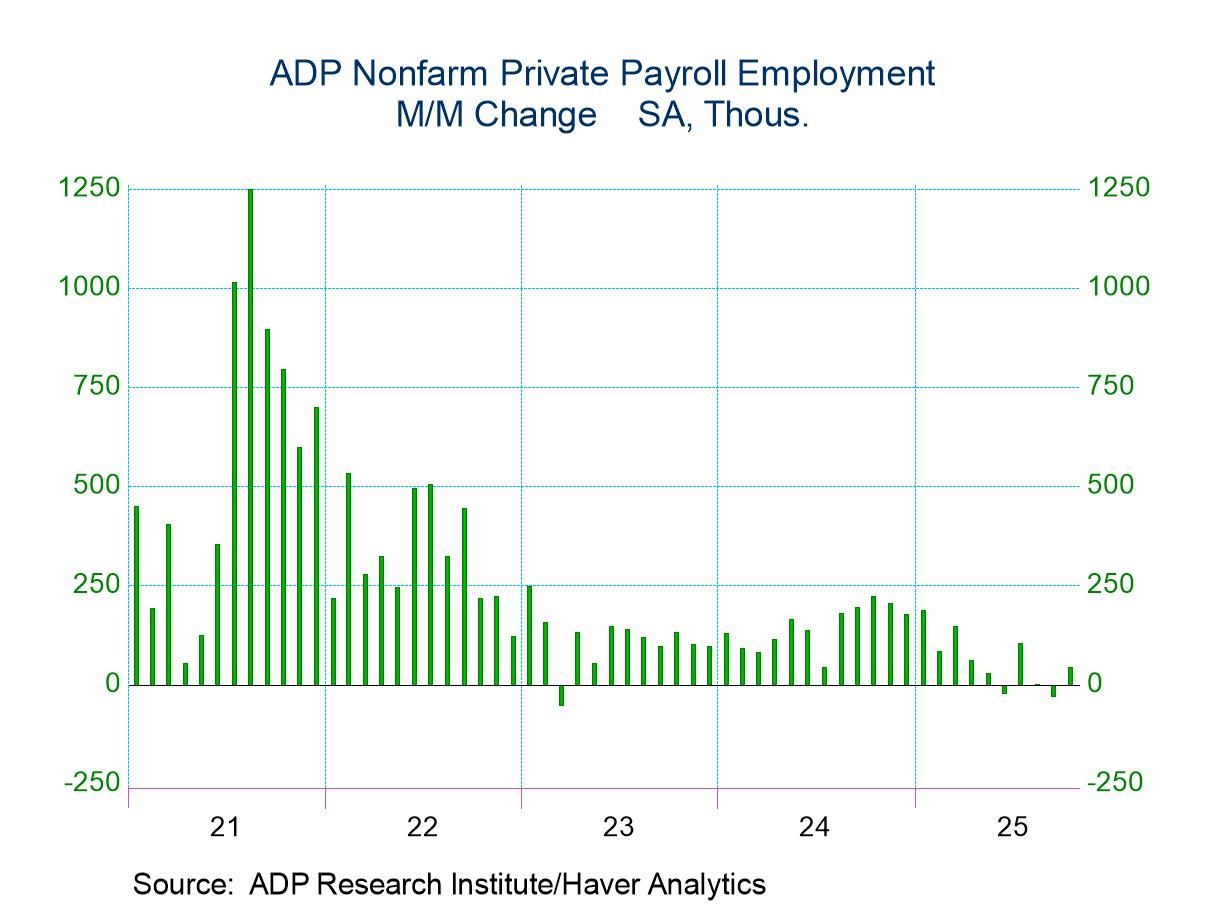 Global| Mar 01 2017
Global| Mar 01 2017ISM Factory Sector Index Strengthens; Pricing Power Eases
by:Tom Moeller
|in:Economy in Brief
Summary
Industrial sector activity remains on a strong footing. The ISM composite index of factory sector activity increased to 57.7 during February from an unrevised 56.0 in January. It was highest reading since August 2014. Expectations [...]
Industrial sector activity remains on a strong footing. The ISM composite index of factory sector activity increased to 57.7 during February from an unrevised 56.0 in January. It was highest reading since August 2014. Expectations called for 56.0 in the Action Economics Forecast Survey. During the last ten years, there has been a 75% correlation between the ISM composite index level and the q/q change in real GDP.
A stronger new orders reading of 65.1 led the composite index higher last month. It was the firmest level since December 2013. Inventory building strengthened as the index level moved up to 51.5, the highest since June 2015. The production and supplier delivery indexes also strengthened.
The employment measure eased to 54.2 last month from January's 56.1. The reading continued to indicate, however, net-positive jobs growth compared to declines during all of last year. Twenty-one percent (NSA) of respondents raised employment levels while 13% lowered them. Twelve months earlier, 15% were raising employment. During the last ten years, there has been an 88% correlation between the jobs index and the m/m change in factory sector payrolls.
Pricing power remains strong, but the February prices paid index slipped to 68.0. It stood near the highest level since May 2011. Forty-one percent of respondents raised prices, while five percent lowered them. In February 2016, just nine percent of firms were raising prices.
Amongst the sub-indexes, the new export series improved m/m to 55.0, and remained up from 46.5 where it stood twelve months earlier. The imports index rebounded to 54.0, its highest level in nearly two years. The order backlog series jumped to 57.0, its highest level in nearly three years.
The ISM figures are diffusion indexes where a reading above 50 indicates increase. The figures from the Institute for Supply Management can be found in Haver's USECON database. The expectations number can be found in Haver's AS1REPNA database.
| ISM Mfg (SA) | Feb | Jan | Dec | Feb'16 | 2016 | 2015 | 2014 |
|---|---|---|---|---|---|---|---|
| Composite Index | 57.7 | 56.0 | 54.5 | 49.7 | 51.5 | 51.4 | 55.6 |
| New Orders | 65.1 | 60.4 | 60.3 | 52.1 | 54.7 | 52.6 | 58.9 |
| Production | 62.9 | 61.4 | 59.4 | 52.9 | 54.0 | 53.5 | 59.2 |
| Employment | 54.2 | 56.1 | 52.8 | 48.6 | 49.7 | 51.0 | 54.4 |
| Supplier Deliveries | 54.8 | 53.6 | 53.0 | 50.0 | 51.9 | 50.7 | 55.0 |
| Inventories | 51.5 | 48.5 | 47.0 | 45.0 | 47.2 | 49.0 | 50.8 |
| Prices Paid Index (NSA) | 68.0 | 69.0 | 65.5 | 38.5 | 53.5 | 39.8 | 55.6 |
Tom Moeller
AuthorMore in Author Profile »Prior to joining Haver Analytics in 2000, Mr. Moeller worked as the Economist at Chancellor Capital Management from 1985 to 1999. There, he developed comprehensive economic forecasts and interpreted economic data for equity and fixed income portfolio managers. Also at Chancellor, Mr. Moeller worked as an equity analyst and was responsible for researching and rating companies in the economically sensitive automobile and housing industries for investment in Chancellor’s equity portfolio. Prior to joining Chancellor, Mr. Moeller was an Economist at Citibank from 1979 to 1984. He also analyzed pricing behavior in the metals industry for the Council on Wage and Price Stability in Washington, D.C. In 1999, Mr. Moeller received the award for most accurate forecast from the Forecasters' Club of New York. From 1990 to 1992 he was President of the New York Association for Business Economists. Mr. Moeller earned an M.B.A. in Finance from Fordham University, where he graduated in 1987. He holds a Bachelor of Arts in Economics from George Washington University.



